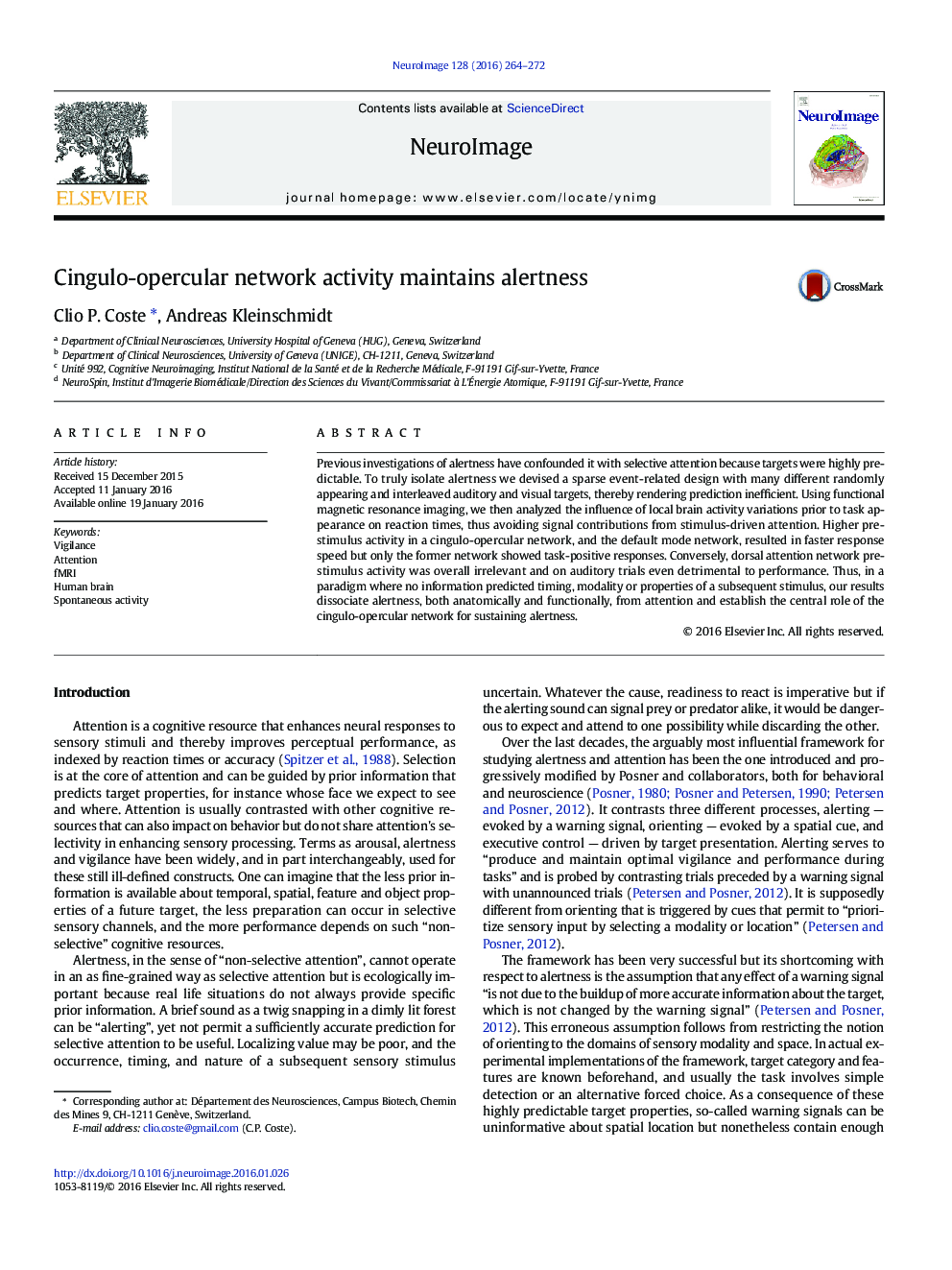| Article ID | Journal | Published Year | Pages | File Type |
|---|---|---|---|---|
| 6024029 | NeuroImage | 2016 | 9 Pages |
Previous investigations of alertness have confounded it with selective attention because targets were highly predictable. To truly isolate alertness we devised a sparse event-related design with many different randomly appearing and interleaved auditory and visual targets, thereby rendering prediction inefficient. Using functional magnetic resonance imaging, we then analyzed the influence of local brain activity variations prior to task appearance on reaction times, thus avoiding signal contributions from stimulus-driven attention. Higher pre-stimulus activity in a cingulo-opercular network, and the default mode network, resulted in faster response speed but only the former network showed task-positive responses. Conversely, dorsal attention network pre-stimulus activity was overall irrelevant and on auditory trials even detrimental to performance. Thus, in a paradigm where no information predicted timing, modality or properties of a subsequent stimulus, our results dissociate alertness, both anatomically and functionally, from attention and establish the central role of the cingulo-opercular network for sustaining alertness.
